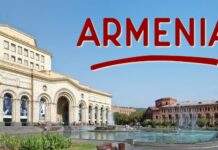M.A History Syllabus Part II Of 2022
Introduction:
Table of Contents
History manages the record of the past. Be that as it may, it isn’t only a plain record yet rather the development, translation and assessment of the past, which is the topic of history. As the past, present and what’s to come are inseparably connected, the significance of history can’t be denied. The genuine spread of authentic information is thusly a pre-essential for a country’s turn of events. That is the explanation that from antiquated occasions, the instructing of history at all levels has stayed a basic piece of the educational programs of the Universities. In the University of the Punjab, M.A History Syllabus was first presented in 1933. Since its presentation, 75% of a century prior, this M.A History Syllabus were altered at various occasions. In any case, for various years, the need had been felt to totally survey the Program and update M.A History Syllabus as indicated by the changing needs of the time and as indicated by the advanced instructing learning methodologies.
2. Aims and Objectives:
- To oblige the need of the country to create the specialists and researchers who can compose political, social, monetary and scholarly history of the individuals of Pakistan.
- To create such scholastic who can show history in schools, universities and colleges at the alumni and undergrad levels.
M.A History Syllabus Part II
List Of Part II Subjects
There will be five specialized groups of courses and the candidates will select any one of the following groups :
- Group ‘A’ History of lndo-Pakistan
- Course HIS/601 Ancient India
- Course HIS/602 Muslim Rule in India (712-1526)
- Course HIS/603 The Great Mughals (1526-1707)
- Course HIS/604 Later Mughals & British India(1707-1857)
- Course HIS/605 The Punjab in Modern Times
- Group ‘B’ Islamic History
- Course HIS/606 Umayyads and Abbasides
- Course HIS/607 Muslim Rule in Spain
- Course HIS/608 The Ottoman Empire (1288-1924)
- Course HIS/609 Central Asia
- Course HIS/610 Contemporary Middle East
- Group ‘C’ Western History
- Course HIS/611 Early Modern Europe (1453-1789)
- Course HIS/612 Modern Europe (1789-1919)
- Course HIS/613 History of England (1688-1919)
- Course HIS/614 United States after Second World War
- Course HIS/615 International Relations and Organizations
Thesis:
A student with the approval of the Board of Studies in History may opt for writing a thesis in lieu of two courses of the group, he/she has selected. Only those students shall be eligible to apply for theses who have either obtained First Division in B.A. examination or First Division in the subject of history in B.A. examination or got at least 55% marks in M.A. History Part-I Examination. A candidate who is permitted to write thesis shall be required to select his/her topic of research in the area or group she/he has opted for in M.A. Part-II or in any of the courses studied in M.A. Part-I.
GROUP A_ INDO-PAKISTAN HISTORY GROUP
Course HIS/601
Ancient India
1. Brief Description:
The course deals with the pre-Muslim period of Indo-Pakistan history. It deals with the Indus Valley Civilization and its landmarks and then also focuses on the origin and development of three important religions of the world: Hinduism, Jainism and Buddhism. It also discusses religio-political history and social conditions of the people of this period.
2. Aims & Objectives:
- After studying this course, students will be able to:
- Appreciate the achievements of one of the oldest civilization of the
- world—Indus Valley—and its relevance to today’s world.
- Understand the socio-political and religious conditions of the people.
- Develop a background for the later developments in India.
3. Contents:
- Sources of early Indian History.
- Indus Valley Civilization, Special study of Moenjodaro and Harrapa.
- The Aryan occupation of India, their origin and migration, their society, religion and culture.
- Early Vedic civilization and culture
- The Epic age, The historical value of the Ramayana and the Mahabharata.
- The Caste system, origin and growth, merits and demerits.
- Jainism. Life and teachings of Mahavira; spready of Jaiinism, Jain Art and culture.
- Buddhism. Hindu society before Gautama, Bhddha, life and teachings of Gautma Buddha, Causes of its spread and decline. Buddhist Art and culture.
- Greek invasion and its impact upon the sub-continent, Greek Art and culture, special study of The Gandhara Art.
- The Mauryan Empire and its administrative system.
- Asoka and the growth of Budhism.
- The Kushana power, Kanishka, Economic conditions and Art, Causes of Downfall.
- The Gupta Empire, (Chandra Gupta, Sumandra Gupta), Golden Age, Art, Literature and science, Hindu Renaissance.
- Harsha Vardhana, Character and administration
- The Huns, their origin and invasion of India.
- Rise of Hindu Shahia power, social, cultural and economic conditions and institutions of Hinduism.
Course HIS/602
MUSLIM RULE IN INDIA (712-1526)
1. Brief Description:
The course deals with the foundation of Muslim rule and the political and administrative developments in the Delhi Sultanate. The course alsofocuses on the political theories of the Sultan, coupled with their administrative styles and socio-religious ideas.
2. Aims & Objectives:
- After studying this course, the students will be able to:
- Understand the politics and administration of the Delhi Sultans
- Appreciate the problems faced by the nascent Muslim population in a Hindu dominated region
- Comprehend the political theories and administrative ideals of the Sultans of Delhi
3. Contents:
1. Sources:
- Qazi Minhaj Siraj Tabaqat-e-Nasiri
- Zia ud Din Barani Tarikh-e-Firuz Shahi
- Amir Khusrau Khazain-ul-Futuh, Miftah-ul-Futuh,
- Nuh Sipihr, Tughluq Nama.
- Yahya Bin Ahmad Sirhindi Tarikh-e-Mubarak Shahi.
- Naimat Ullah Harwi Makhzan-e-Afghani
- Ibn Battutah Rahila-i-Ibn Battutah.
- Conquest of Sind, Arab Rule and Administration.
- The Slave Dynasty: Qutb-ud-Din Aibek, Consolidation of Muslim power under Iltutmish, his character, achievements; Razia Sultana, Nasir-ud-Din Mahmud; Balban: his theory of Kingship and principles of Government, Mongol invasions, administrative reforms and estimate of Balban.
- The Khaljis: Khalji Revolution and its significance, Jalal-ud-Din Khalji: conquests, achievements and character. Ala ud Din Khalji: conquests, Mongol policy; Military and Civil administration, economic reforms, Deccan Policy, his viewes regarding state and religion; character and estimate. Qutbud-Din Mubarak Shah. Khusrau Khan and end of the Khalji dynasty.
- The Tughluqs: Ghias-ud-Din Tughluq: consolidation of the Sultanate, reforms, character, causes of his death. Muhammad Bin Tughluq: His projects, religious views and relations with Ulema and Mashaikh, conquests, views of the contemporary writers, his estimate. Firuz Shah: Administrative reforms, rebellions, his estimate as a man and as a King. Disintegration of the Tughluq dynasty. Amir Timur’s Invasion and its Impact.21
- The Sayyids: The Political conditions in Indo-Pakistan in the early fifteenth century, Khizr Khan and his efforts to establish himself, character. Mubarak Shah and his achievements, fall of the Sayyid dynasty.
- The Lodhis: Early career of Bahlul Lodhi, his struggle with Sharqi dynasty of Jaunpur, conquests, an estimate; Sikandar Lodhi and the consolidation of the Delhi Sultanate, administrative reforms and his estimate. Ibrahim Lodhi, his conflict with Umara, his character; first Battle of Panipat;
- Causes of the downfall of the Delhi Sultanate. Relations of the Delhi Sultans with the Abbasid Caliphate; Mongol invasions and their impact; Socio-economic conditions,.
- Administration and Culture: Central and provincial administration; judicial system; Army Organization, Economic System; Trade and Commerce, Art and Architecture, Literature, Education, Relations of Delhi Sultans with nonMuslims; the role of Sufis of Chistia and Suharwardiya orders during the Sultanate period.
Course HIS/603
The Great Mughals (1526-1707)
1. Brief Description:
The course focuses on an in-depth study of the Mughal rule. The policies pursued by different monarchs and their impact will be dealt with in detail. This course will also discuss the administrative and cultural advancements made during the Mughal rule.
2. Aims & Objectives:
- After studying this course, the students will be able to:
- Understand the nature of politics and administration of the Mughals
- Comprehend the political theories and administrative ideals of the Mughal Emperors
- Appreciate the nature and significance of revivalist movements during the Mughal Era
3. Contents:
4.Sources:
- Tuzuk-i-Baburi by Babur.
- Muntakhab-ut-Tawarikh by Abdul Qadir Badayuni.
- Akbar Nama by Abul Fazl.
- Iqbal Nama-i-Jahangiri by Mutamad Khan
- Padshah Nama by Abdul Hamid Lahori.
- Ma’asir-i-Alamgiri by Muhammad Saqi Mustaid Khan.
5.BABUR:
His career in Central Asia, His rivals: Shaibani Khan, Ubaidullah Uzbek; social, economic and political conditions of the Indo-Pakistan sub-continent on the eve of Babur’s invasion, the First Battle of Panipat. and its significance, his other conquests in India, his character, study of Tuzuk-i-Baburi.
6. HAMAYUN :
His difficulties, relations with Rajputs, wars with Bahadur Shah and Sher Khan, battles of Chausa and Qanauj, exile and re-conquest of India, relations with the Safavids, his literary taste and character.
7. S H E R S H A H & H I S S U C C E S S O R S :
Sher Shah; rise to power, his conquests, reforms and administration, his character; Islam Shah Suri: his character and achievements. Causes of the downfall of the Suri dynasty.
8. AKBAR :
His early life, second Battle of Panipat and its significance, reestablishment of the Mughal rule, Petticoat government, his difficulties in the North West, his conquests, policy towards the Deccan States; Relations with the Rajputs, his religious views, Din-i-llahi or Tauhid-i-Ilahi, reaction by the Ulema and Mashaikh like Mujaddid Alf-i-Sani, Abdul Haq Muhaddis23 Delhavi and others, Mahdavi Movement. His relations with the Portuguese; Administrative Reforms, his estimate.
9. JAHANGIR :
Early life; His accession; Nur Jahan and her Junta; relations with the Safavids and the problems of Qandahar, conquests in Bengal, Mewar and Kangra; relations with Rajputs. Campaigns in the Deccan, his literary taste and other habits, revolts of Khurram and Mahabat Khan, his character, study of Tuzuk-iJahangiri.
10. SHAH JAHAN :
Early life, rebellions of Khan Jahan Lodi, Jujhar Singh, Jagat Singh, Conquests, attitude towards the Portuguese; relations with Rajputs, Mughal-Safavid relations, Central Asian policy; his Deccan Policy, his study as an engineer King; administrative reforms, his character and estimate; war of succession between his sons. A detailed study of Dara Shikoh.
11. AURANGZEB :
His career as prince, his religious views, measures taken to enforce Shari’at, attitude towards non-Muslims; administrative reforms; relations with Rajputs, Sikhs and the Marathas, his Deccan Policy, relations with Foreign Muslim Governments, Mughal-Safavid relations, conquests, the Afghan Revolt; revolts of the Jats and Satnamis, his attitude towards the Portuguese and the English, his character and estimate of his achievements.
Course HIS/604
Later Mughals & British India (1707-1857)
1. Brief Description:
The course deals with the period of decline of the Mughal Empire. The causes of the downfall and the resultant institutional breakdown have been discussed. However, it also focuses on the new regional and foreign powers which were expanding their influence. The Muslim revivalist and resistance movements have also been highlighted in this course.
2. Aims & Objectives:
- After completing this course, the students will be able:
- Comprehend the dynamics and complexities of Mughal downfall
- Understand the ways and means of colonial and regional powers to establish their rule
- Analyze the causes of failure of revivalist and resistance movements
3. Contents:
i) Sources:
- Khafi Khan Muntakhib-ul-Lubab
- Muqarrab Khan Bahadur Shah Nama
- Muhammad Qasim Ibrat Ibrat Nama
- Muhammad Ali Panipati Tarikh-I-Muzaffari
- Khair-ud-Din Allahabadi Ibrat Nama
- Ghulam Husain Tabatabai Siyarul Mutakhirin
ii) Imperial Politics of the Mughals 1707-1857
iii) Theories of Mughal Downfall
- Degeneration of Muslim Character
- Factional Feuds of Mughal Nobility
- Crisis of Mansabdari System
- Great Firms and Financial Upheaval
- British Technological Superiority
iv) Growth of Independent and Semi-Independent States
Deccan—Bengal—Oudh—Punjab—Rohilkhand
v) East India Company and Establishment of Colonial Rule
Clive—Hastings—Cornwallis—Wellesley—Dalhousie
vi) Revivalist and Resistance Movements
- Shah Wali Ullah and his family.
- Syed Ahmed Shaheed and the Jihad Movement.
- Haji Shariat Ullah, Titu Mir and Fariazi Movement.
- Haider Ali and Tipu Sultan.
- War of Independence 1857.
vii) Intellectual and Literary Developments
Course HIS/605
The Punjab in Modern Times
1. Brief Description:
The course deals with the history of the rich and fertile region of the Punjab. Tracing its history from the foundation of Muslim rule in this region, it focuses on the developments in modern times, particularly its role in the Pakistan Movement.
2. Aims & Objectives:
- After completing this course, the students will be able to:
- Know the historical development of the Punjab from medieval to modern times.
- Understand the dynamics of the politics of the region during the colonial period.
- Appreciate the role played by different groups and parties for creating politica and intellectual awareness in the Punjab.
3. Contents:
- Foundation of Muslim Rule; Brief Survey of Sultanate and Mughal periods, Their Impact on Socio-Economic Conditions, Downfall of Muslim rule.
- Rise of the Sikhs; Ranjit Singh, administration, foreign policy, attitude towards non-Sikhs; Downfall of the Sikhs and the British Annexation.
- Political Unrest; Land Alienation Act; Anti-Rowlatt Act Agitation, Jallianwala Bagh Tradgey-causes, events and effects.
- Punjab Provincial Muslim League: Early History (1907-1917).
- Mian Fazl-i-Hussain and National Unionist Party; His Contribution as Provincial Minister and Muslim Leader, Relations with Muslim League. Sikandar Hayat Khan’s Premiership, Sikandar-Jinnah Pact, Masjid Shaheed Ganj Agitation.
- Khizar Hayat’s Relations with Muslim League and his Expulsion. Reorganization of Muslim League in the Punjab, it Success in the Elections of 1946, Role of Political Leaders, Ulama and Mashaikh, Press, Students and other Sections.
- Allama Muhammad Iqbal’s Role in Punjab Politics.
- Majlis-i-Ahrar: Foundation, Political Ideas and Role. Khaksar Tehrik: Objectives, Programme, Clash with Police in 1940 and Political Role. A Brief Study of Punjab Branch of Indian National Congress and Akali Dal.
- Partition of the Punjab: Background, Demands by non-Muslims, Muslim League’s Stand, Radcliffe Award
GROUP B_ ISLAMIC HISTORY GROUP
Course HIS/606
UMAYYADS & ABBASIDES
1. Brief Description:
The period of Umayyads and Abbasid dynasty is the classical period of Islamic History. After the end of Pious Caliphate, they laid the foundations of intellectual and cultural effervescence of Islamic civilization. Besides studying cultural and intellectual currents of the period, this course also deals with the administrative setup and political ideals of the ruling families.
2. Aims & Objectives:
- After studying this course, the students will be to:
- Understand the transformation from Khilafat-e-Rashida to autocratic / monarchical system of government.
- Comprehend the administrative setup and expansionist policies pursued by the Umayyads & Abbasides.
- Appreciate the religio-political trends and cultural and intellectual developments of the period.
3. Contents:
I) Umayyad Caliphate:
- Amir Muawiya: Domestic and Foreign policy, Consolidation of Power and Administration, His Character and Achievements.
- Tragedy of Karbala: Nomination of Yazid and His Autocratic Rule, Resistance of Hazrat Imam Hussain and the Tragedy of Karbala, Its Effects on Islamic History.
- Marwan: Battle of Marij-e-Rahit, His Internal Policy and Consolidation of Power.
- Abdul Malik: Consolidation of his Power, His Character and Administrative Reforms, Abdullah bin Zubair & his Rule and Character.
- Walid: His Conquests and their Effects, Internal Policy and Character.
- Sulaiman: His Character and Achievements.
- Hazrat Umar Bin Abdul Aziz: His Early Life, His Accession, Administrative and Religious Reforms, His Character.
- Hasham: His Literary Taste, His Estimate.
- Causes of the Decline of the Umayyad Rule.
- Administration: Central and Provincial Administration of the Umayyads, Judiciary and Military System.
- Culture: Literature, Architecture, Music, Education.
- Relations of the Umayyads with the Western World.
II) Abbasid Caliphate:
- Abbasides and their Movement, their Accession to Power. Character of Abbasides.
- Caliph Al-Saffah: His Character and Rule.
- Abu Jafar al-Mansur: His Political Policy, Character and Achievements.
- Mehdi: Emergence of the Zindiqs, Administrative Policy, His Estimate.30
- Harun-ur-Rashid: Barmaki Family, Its Rise and Fall, Intellectual Development, Character and Achievement.
- Al-Mutasim: Mutazilites and Tussle with Imam Ahmad bin Hanbal, Rise of the Turks.
- Al-Wathiq: Revolt of the Arabs, Murder of Ahmad bin Nasr.
- Al-Mutawakkel: Relations with the Turks, His Religions Policy, Character.
- Role of the Buwaihids and the Seljuqs.
- Cause of the Downfall of the Abbasids.
- Central and Provincial Administration, Judiciary and Military Systems.
- The Mutazillites and Asharites.
- Architecture, Paintings Culture, Art, Music.
- Relations of the Abbasides with the West.
COURSE: HIS/607
MUSLIM RULE IN SPAIN
1. Brief Description:
This course deals with the golden period of Muslim civilization in the west. It focuses on the intellectual and cultural developments of Muslim Spain and highlights the causes of their downfall and banishment from Europe.
2. Aims and Objectives:
- After studying this course, the student will be able to:
- Appreciate the richness of Muslim Culture and intellectual effervescence.
- Understand the political ideals and administrative style of the rulers of Muslim Spain.
- Have an in-depth study of the causes and effects of the defeat and banishment of Muslims from Spain.
3. Contents:
- Spain at the Advent of Muslim Conquest, the Causes of Muslim Success, Spain under Muslim governments, Tribal and Racial Jeopardy, Civil Wars, Attempt at Expansion of Muslim Borders.
- Abdur Rahman I: His Character and Achievements.
- Hisham I: Internal policy, Growth of Maliki Ugh
- Hakam I: His Relations with Theologians, Wars and Rebellions, His Army and Navy, Character and Achievements.
- Abdur Rahman II: His Character and Achievements, His Court and Wars with the Christians, Foreign Policy, Cultural and Literary Activities.
- Muhammad I: Position of the Non-Muslims, Rebellion in Toledo, Rise of the Banu Qais in Saragossa, Rebellions of Ibn Marwan and Ibn Hafsun, His Character and Achievements.
- Abdur Rahman III: Restoration of Law and Order, Relations with the Christians and the Fatimids, the Title of Caliph, Prosperity and Growth of Culture, Administration and Achievements.
- Hakam III: Frontier Policy, Relations with North Africa, Scholarly Persuits, Patron of Arts and Letters, University of Cordova, Public Libraries, Development of Architecture, His Character and Achievements.
- Later Umayyads: Rise of Hajib al-Mansur, Relations with Countries and the Theologians, Military Organization and Wars, Achievements.
- Decline and Fall of the Umayyads of Spain.
- Administration of Spain under the Umayyads.32
- Petty Dynasties: Banu Hamud and Banu Ziri of Granada, Mamluks of South East Spain, Banu Hud of Saragossa, Banu Dhu’al-Num of Toledo, Banu Abbad of Saville.
- North African Rule: Murabitin, Al-Muwahiddin.
- The Nasirid Dynasty: Career of Muhammad I, His Buildings, Alhamra, Character and Achievements, His Sussessors, Their Struggle against the Christians, Art, Architecture and Learning, Their Decline and Fall.
- Expulsion of Muslims from Spain and its Effects, the Causes of the Downfall of Muslims in Spain.
- Muslim rule in Spain and its Contribution to various Fields of Arts, Architecture and Science, Eminent Scholars including Historians.
- Structure of government and administration.
Course HIS/608
The Ottoman Empire (1288-1924)
1. Brief Description:
Being placed at the center of the three continents of the world – Asia, Africa and Europe – the Ottoman Empire occupied a special place in Islamic history. The course deals with the origin, growth and decline of this Empire. The study of administrative structures and cultural achievements of the Ottomans is a special feature of this course.
2. Aims & Objectives:
- After studying this course, the students will be able to:
- Comprehend the territorial growth and political developments in the Ottoman Empire.
- Understand the achievements of the Ottomans in the fields of education, art and culture
- Appreciate their military and naval administration and achievements
3. Contents:
- Advent of Ottoman Turks in Anatoia and foundation of the Empire Osman.
- Aurkhan : Establishment of the Empire.
- Murad I : Battle of Kasowa.
- Bayazid Yildirim: Battle of Angora.
- Muhammad I : Consolidation of the Empire.
- Muhammad II : Conquest of Constantinople.
- Salim I : Conquest of the Middle East, Establishment of the Khilafat.
- Sulaiman the Magnificent : His achievements and administration.
- Later Sultans : This period will be studied under the following heads:
- Different Reforms, Eastern Question, Young Turks Movement.
- Central and Provincial Administration
- Causes of the downfall of the Ottoman Empire
Course HIS/609
Central Asia
1. Brief Introduction:
Central Asia has played a vital role in history of the world. Much has world’s ancient history originated in central Asia for it was the birthplace of the great warrior tribes which conquered Russia, Europe, India and China. It had been a hunting ground for two great powers of the 19th century i.e. Russia and Britain. The long era of Russian– Soviet rule drastically changed the society and culture of Central Asia. Since the break up of USSR, Central Asian republics have gained their independence. For a Pakistani student, to study Central Asia is important because of close historical, religious, sociocultural, economic and political relations between Central Asia and Indian sub-continent.
2. Aims & Objectives:
- After studying this course, the students will be able to:
- Understand the nature of the historical development of Central Asia.
- Appreciate the socio-cultural and religious contributions of Central Asia.
- Understand the geo-strategic significance of the region particularly from a Pakistani perspective.
3. Contents:
i) Early Period
- The land and the people
- Early nomadic tribes and their Origin
- Geo-Strategic Significance of the Region
- The saka Tuiles, the segthious, the Parthian the Persian rule and sarramids
- Alexander the Great and the Greek rule
- Religious Trends and Spread of Budhism
- Arrival of the Huns and Turkic Tribes
ii) Islamic Period
- Early Invasions of the Arabs, Arab rule in Farbeaund Valley
- Religious Socio-cultural Transformation of Central Asia under the Arabs
- Samanid Rule and their Contributions in Art, Culture and Science
- The Ghaznavid Dynasty
- The Seljuks and their Contributions
iv) Mongol Invasion and Chengiz Khan: Impact on the Region.
iv) Amir Timur and Timurid Dynasty
v) Decline of the Muslim Rule
- Shaybani Uzbeks
- The Khannates of Khiva, Bukhara and Koband
- Characteristics and Nature of the Era
vi) Russian Advance in Central Asia
- Causes and aims of the Russian expansion
- Causes of the Russian success
- Socio-economic political and religious conditions of Central Asia under Russian
- The Great Grace in the 19th century35
- Résistance against Russian rule and the nationalist movement
vii) Soviet Era
- Bolshevik revolution (1947) and the response of Central Asia the Jadid
- movement and the Basmachi movement.
- Sovietization of Central Asia
- The socio-cultural transformation of Central Asia.
viii) Post-Independence Scenario
- Disintegration f USSR and the Independence and formation of commonwealth of Independent states (CIS)
- New Great Game: role of Turkey, Iran Pakistan, Russia, USA, Afghanistan, etc.
- Socio-cultural, political and religious problems of the new republics.
- Economic prospects and regional co-operation: ECO
Course HIS/610
CONTEMPORARY MIDDLE EAST (Turkey, Iran, Egypt, Saudi Arabia & Palestine)
1. Brief Description:
Middle East is one of the most important regions of the world. Its importance lies not just because of its strategic location but also due to its economic potential and the character of its politics. The interest, rather interference, of great powers in the region has made it a hub of international politics. This course deals with the developments in the modern Middle East.
2. Aims and Objectives:
- After studying this course the students will be able to :
- Develop a background for understanding the dynamics of internal politics of important states of Middle East.
- Understand the foreign relations of different states in the Middle East with other powers of the region and with the great powers.
- Comprehend the political and socio-economic character of the region.
3. Contents:
- World interests in the Middle East.
- Great Powers Rivalry in the Middle East.
- The Middle East First World War and the Peace Conferences.
- Modern Turkey under Kamal Ata Turk.
- The Kamalist Revolution and Reforms of Mustafa Kamal Pasha.
- Ata Turk’s domestic and foreign policy.
- Turkey under Ismat Inonu.
- Iran under Raza Shah.
- Reforms of Raza Shah Pahlavi.
- Raza Shah’s Domestic and foreign policy.
- Iran and the great powers.
- Turkey, Egypt and Iran during the 2nd World War.
- Western imperialism in Iran
- Nationalism and the nationalization of oil in Iran by Dr. Muhammad Mussaddiq.
- Rise of Ibn-e-Saud as the King of Saudi Arabia.
- Discovery of oil in Saudi Kingdom.
- Ibn-e-Saud: His character and achievements.
- Rise of Faisal in Saudi Arabia.
- King Faisal’s domestic and foreign policy.
- The Arab League.
- The Palestine problem.
- Struggle for independence and the Rise of nationalism in Egypt (1924-1936).
- The Anglo-Egyptian Treaty of 1936.
- The Revolution of 1952.
- Western imperialism and the Construction of Aswan Dam.37
- Egypt under Gamal Abdul Nasir.
- The nationalization of Suez Canal.
- United Arab Republic (UAR).
- Gamal Abdul Nasir’s New Egypt; his domestic and foreign policy
- Unity and diversity in the Middle Eastern Politics.
GROUP C__ Western History Group
COURSE HIS/611
EARLY MODERN EUROPE (1453-1789)
1. Brief Description:
This course focuses on a very important period of European history in which Europe was gradually being transformed from medieval society to a modern society. The cultural and intellectual movements such as renaissance, reformation and enlightenment are the special features of this course.
2. Aims and Objectives:
- After studying this course, the students will be able to:
- Know how Europe was transformed into a modern society
- Appreciate the philosophical and intellectual movements and trends of the period.
- Understand political developments of the ruling class and socioreligious ideas of the people.
3. Contents:
- Renaissance
- Reformation and Counter-Reformation
- Rise and Decline of Spain
- Thirty Years War and Peace of Westphalia
- Developments in France and England in the 17th Century
- Rise of Sweden, Russia and Prussia
- War of Spanish Succession 1701-1714
- Seven Years War 1756-1763
- Struggle for Wealth and Empire in the 18th Century
- Enlightenment and Age of Reason
COURSE HIS/612
MODERN EUROPE 1789-1919
- Brief Description:
- Aims and Objectives:
- Contents:
- French Revolution of 1789, causes, role of the intellectuals and effects.
- Aftermath of the Revolution: Work of the National Assembly Critical estimate, Bloodshed and Reign of Terror, National Convention Directory and the Thermidorians Important Leaders of the Revolution.
- Napoleon Bonaparte I, Background, Reforms Continental System, Conquests and failure
- Congress of Vienna (1815) Holy Alliance, Concert of Europe, work and failure,
- Bourbon Restoration,
- Revolution of 1880 and its effects in Europe, Metternich
- Louis Philippe, Internal and External Policies,
- Revolution of 1848 and its effects in Europe
- Eastern Question: Greek War of Independence, Crimean War, Alexander II of Russia
- Napoleon II
- Unification of Italy, role of Cavour, Mazzini and Garibaldi
- Unification of Germany: Bismarck (1871-1890)
- Third French Republic
- Partition of Africa
- Towards World War I: Diplomatic conditions (1890-1914), Triple Alliance and the Triple Entente, Causes of World War I
- Russian Revolution (1917),
- Peace Settlement (1919)
COURSE HIS/613
HISTORY OF ENGLAND (1688-1919)
1. Brief Description:
History of England is important as well as interesting for the student. The course covers the period when glorious revolution took place and modernity began in England. It also deals with the history of England as a colonial as well as political power. This course is design to highlight political, economic, social and constitutional developments in England.
2. Aims and Objectives:
- After studying this course, the students will be able to :
- Understand the political and intellectual developments in England which made it the greatest colonial empire of the world.
- Appreciate the constitutional reforms and economic progress in England during this period.
- Comprehend the British foreign policy of this period.
3. Contents:
- Glorious Revolution.
- Reign of William III and Queen Mary.
- Era of Queen Anne.
- Hanoverian Accession: George I: George II: George III:
- Industrial Revolution,
- French Revolution and Napoleonic Era.
- Lord Castlereagh, George Canning & Foreign Policy of England,
- Reforms acts of 1832, 1867, 1884 and 1911.
- Robert Peel, Political Religious & Social Movements,
- Lord John Russell and Liberal Party.
- Gold stone.
- Benjamin Disraeli & New Imperialism.
- British Diplomacy from 1870 to 1919.
COURSE HIS/614
United States After Second World War
1. Brief Description.
This course focuses on the socio-political history of USA in modern times. Her role, importance and responsibilities as super power will also be discussed.
2. Aims and Objectives.
- After studying this course, the students will be able to:
- Know about the socio-political and economic developments happened in USA in details;
- Evaluate the causes and events for becoming her world power.
- Understand the international politics.
3. Contents.
- Post War America: Harry Truman’s President ship, his doctrine, Cold War, the Korean War, Dwight D. Eisenhower’s leadership, Cold War and USA Domestic Affairs, Economy and Culture (1945-1960).
- John F. Kennedy and Lynden Johnson’s Governments, Cuban Missile Crisis, The Vietnam War.
- President Nixon, Watergate scandal, Gerald Ford’s Presidentship.
- President Jimmy Carter, Post-Vietnam Foreign Policy, The Civil Rights Movement (1960-1980), The Legacy of Martin Luther King, JR, The Women’s Movement. The Latino Movement, The Native American Movement.
- President Ronald Reagan, The Society, economy and foreign affairs during Reagan Administration (January 1981- January 1989).
- The Presidency of George Bush (January 1989-January 1993) End of the Cold War, The Gulf War and foreign affairs. New World Order.
- President Bill Clinton, his Foreign Policy, Rise of Terrorism.
COURSE: HIS/615
INTERNATIONAL RELATIONS & ORGANIZATIONS
1. Brief Description:
This course is a pre-requisite for understanding the developments in the modern world. It focuses on approaches to the study of international politics, the foreign policies of great powers particularly, United Stats and USSR (presently Russia.) and the cold war themes and issues. An important part of this course is related to the study of regional and international organizations.
2. Aims and Objectives:
- After studying this course, the students will be able to:
- Understand the concept and theory of international relations.
- Appreciate the developments in the international politics, particularly the policies pursued by the Super Powers.
- Develop an understanding of the working of regional and international organizations and the role played by them in international politics.
3. Contents:
- Introduction of International Relations.
- Approaches to the study of International Relations.
- A Short Introduction of the Geography of the World.
- Themes and Topics in 20th Century International History: World War I & II, Causes & Results.
- Foreign Policies of U.S.A., U.S.S.R with special reference to West Asia, South Asia and South East Asia.
- Cold War
- West Asian Problems
- Arab Israel Conflict,
- Suez War
- Iran-Iraq War
- Russian Intervention in Afghanistan
- Downfall of Soviet Union
- South East Asia and its Problems & Importance in future perspective.
- Disarmament Problem
- Gobalization & Its Impact on Individuals, Groups, Firms and Political Authorities
- Organizations:
- United Nations: Origin, Structure, Activities and its Functions for Peace Keeping
- Non-Aligned Movement
- Organization of Islamic Conference
- NATO
- Warsaw Pact
- Arab League
- European Economic Committee
- SAARC
























